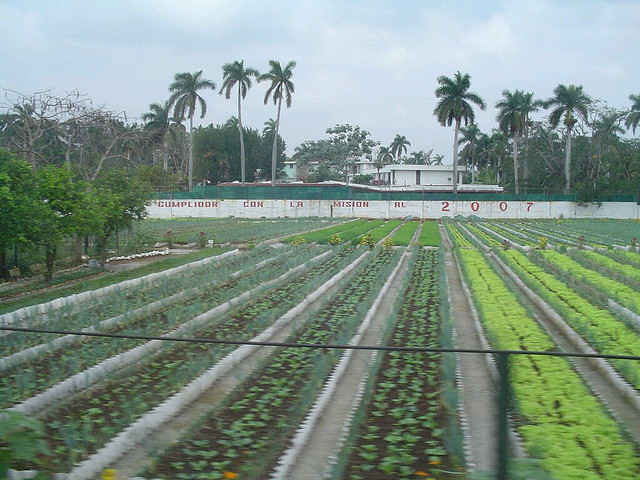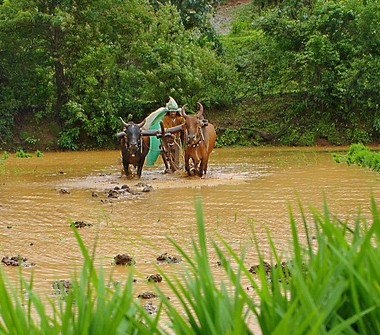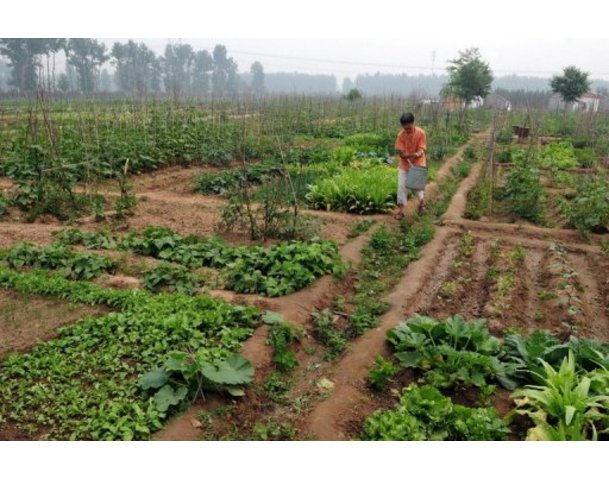The Swine Weed Pandemic
It’s ironic that while our attention is being directed to the swine flu epidemic, which doesn’t seem to be hurting much of anything, a real threat to our life-support system is crawling out of the wasteland created by chemical-industrial agriculture: the super-pig-weed.
It looks just like the pig weed that corn-, cotton- and soybean-farmers have been fighting in the South forever. It’s big, it kicks the crap put of any crop it’s contesting with, and it’s tough enough to stop a combine in its tracks. The only thing different about the superweed variety is that it can’t be killed by any manmade chemical.
Twenty years or so ago, that wouldn’t have been a threat to life as we know it. But it is now. The reason — the most successful single promotion of a destructive chemical farming practice ever perpetrated. The winner was Monsanto, which in the 1970s introduced the glyphosate herbicide Roundup, which was less persistent after application and thus less toxic to groundwater and other plant life that many other herbicides. Then, in the mid-1990s, Monsanto introduced Roundup-resistant crops, which had been genetically modified so that Roundup couldn’t kill them.
It solved an old problem of chemical farming. Until then, sprays could kill broadleaf plants, or they could kill grasses, but they couldn’t knock the wild oats out of a wheat field without killing the wheat, or select broadleaf weeds in a soybean field. Now, Roundup could. It killed everything
In about ten years, the application of Roundup went from about eight million pounds (1994) to about 120 million pounds (2005). In 2006, Roundup-Ready crops occupied nearly one-half of the available cropland in the United States.
The inherent flaw in chemical agriculture is that no chemical kills everything it’s supposed to, and every application of a chemical spurs the development of resistant mutants. There are already 16 weed species in the world, nine on the United States, that shrug off Roundup as if it was a spring rain. Pigweed is one of them.
The inherent flaw in industrial agriculture, with its relentless pursuit of the economies of scale (while it ignores the simultaneous and equal concentration of risk), is that when you have ten thousand acres of one thing, a threat to that thing is going be pretty catastrophic. Sustainable farming, by contrast, will grow 20 or 50 things on a hundred acres.
So here we have the corn and soybean and cottonseed farmers of the South who are facing ruination because of pig weed. They are trying applications of four times the previously adequate amounts of Roundup. It’s not working. They are rolling out mechanical cultivators, which have not been seen in these fields for 20 years. The problem here is that sow-and-spray agriculture was so easy, and the farms got so big (10,000 acres-plus is now the norm), that the tractors, implements and manpower needed to go back to mechanical cultivation simply don’t exist.
The pigweed problem emerged as a major threat only this summer. As Arkansas extension agent Ken Smith described it, “In July we began hearing horror stories all over the state. ‘Man, there are ankle-high weeds out there that Roundup won’t even touch.’” This year, the pig weed spread to more than a million acres of cotton and soybeans. Says Smith: “I’ve never seen anything that had this major an impact on our agriculture in a short period of time.”
This winter, farm groups all over the country will be trying to come up with an answer to the spreading plague of pigweed (the most effective control yet devised — hand weeding. Try that on 10,000 acres). Monsanto has promised a vaccine — honest, they swear they’ll have a chemical answer by 2015.
Here’s what you can count on: the pigweed plague, and the associated accumulating failures of industrial agriculture, are going to hit us all a lot harder that the swine flu.
For a careful description of the spreading pigweed panic, written for the industrial-agriculture press, check out this piece in the Delta Farm Press: “Resistance threatens conservation tillage.”
http://deltafarmpress.com/cotton/conservation-tillage-0914/
For a less restrained version, this piece in Grist: “The chemical treadmill breaks down and the superweeds did it.”
http://www.grist.org/article/the-chemical-treadmill-breaks-down-and-the-superweeds-did-it/
And for a more complete explanation of of how we got here, see my forthcoming book Brace for Impact: Surviving the Crash of the Industrial Age by Sustainable Living.
It’s ironic that while our attention is being directed to the swine flu epidemic, which doesn’t seem to be hurting much of anything, a real threat to our life-support system is crawling out of the wasteland created by chemical-industrial agriculture: the super-pig-weed. Continue reading →



